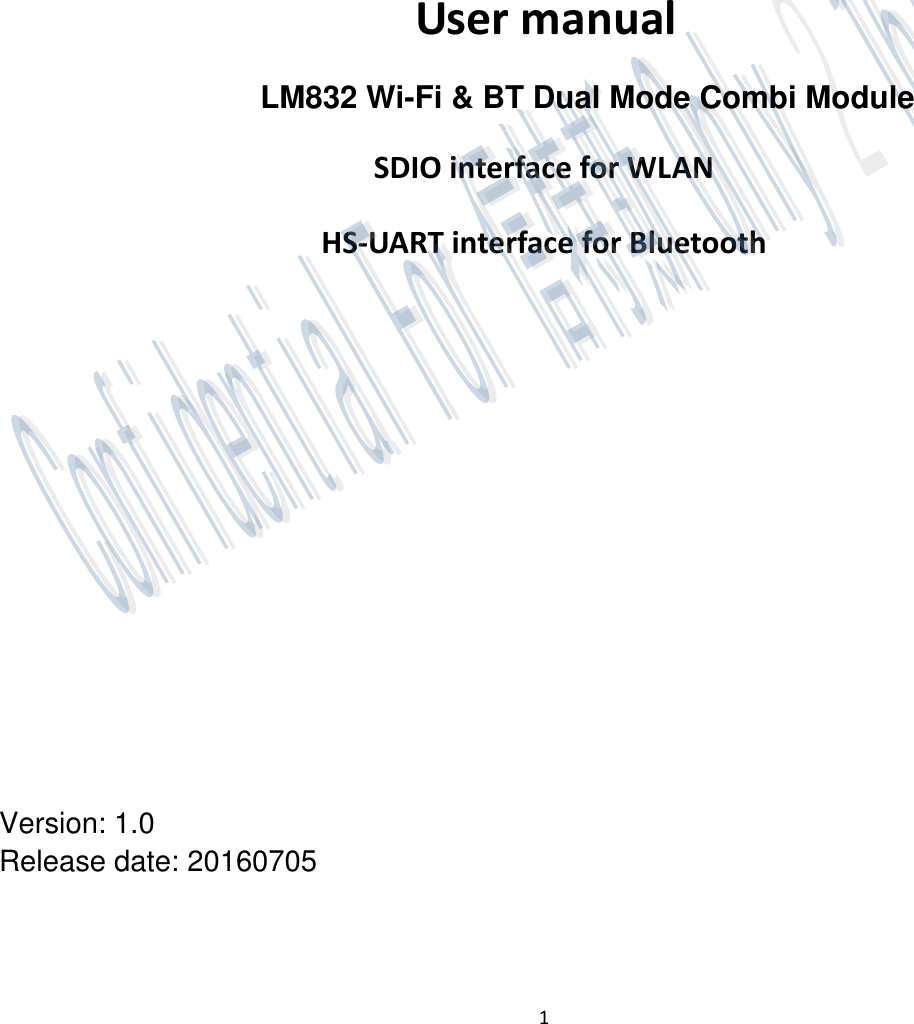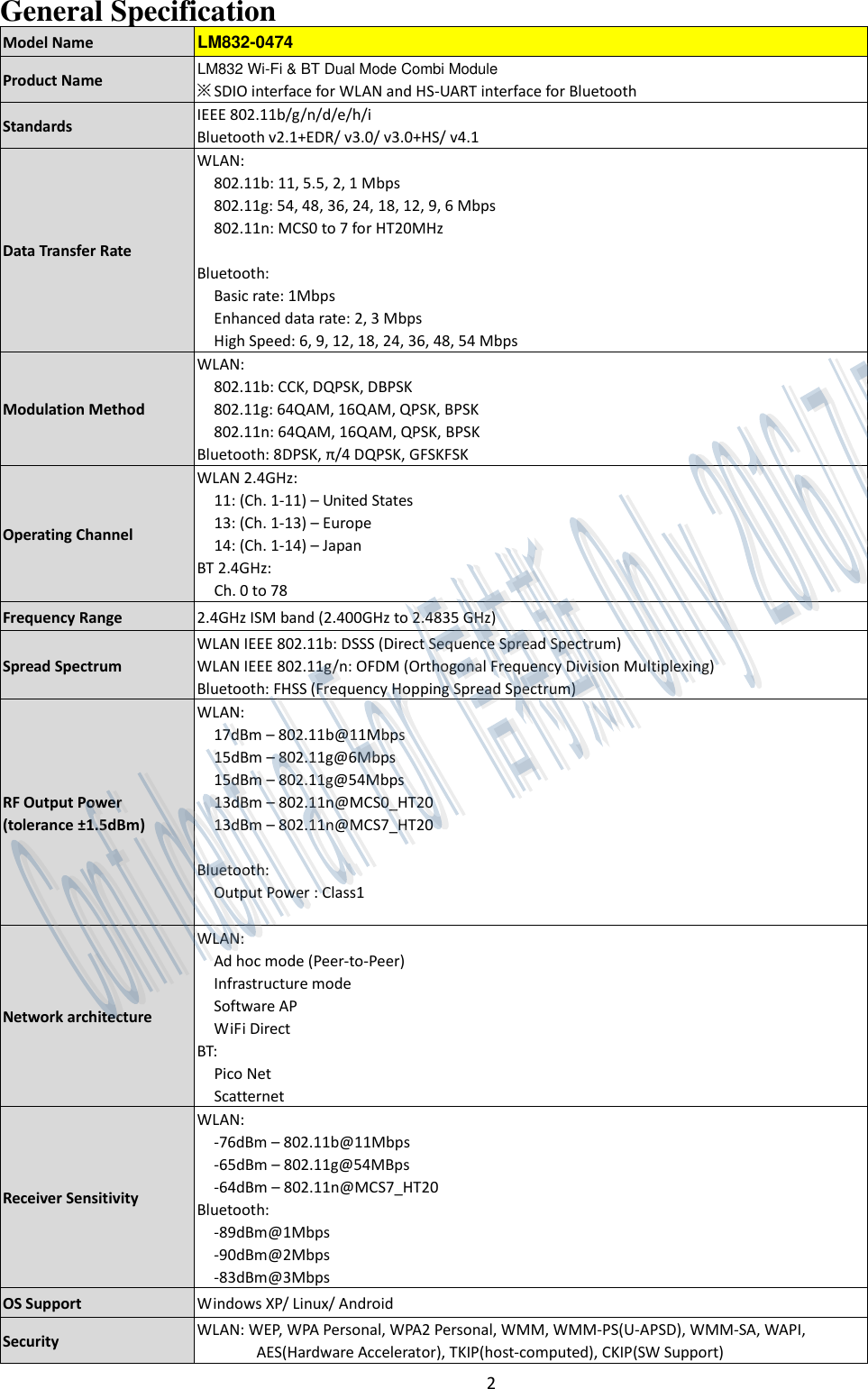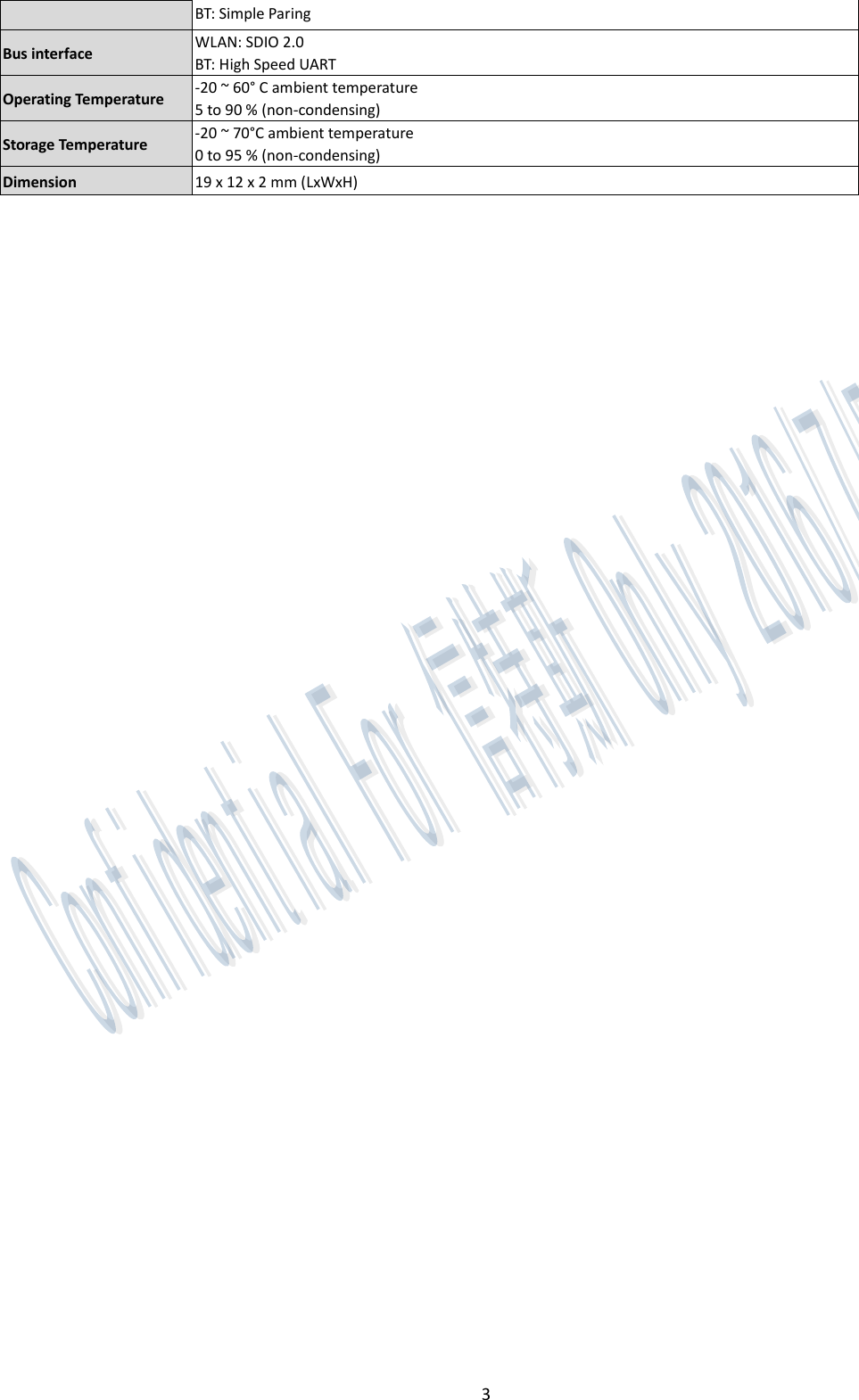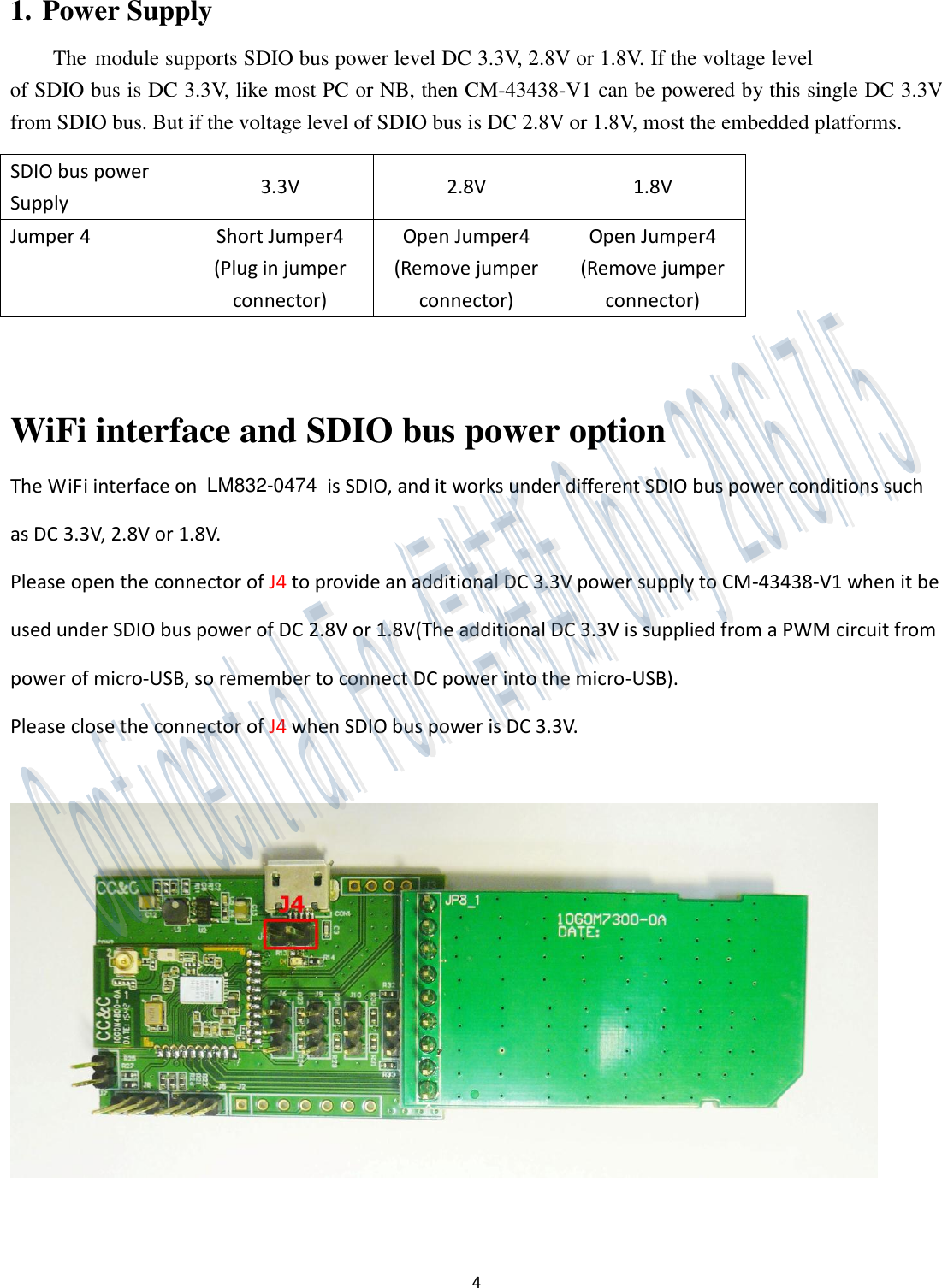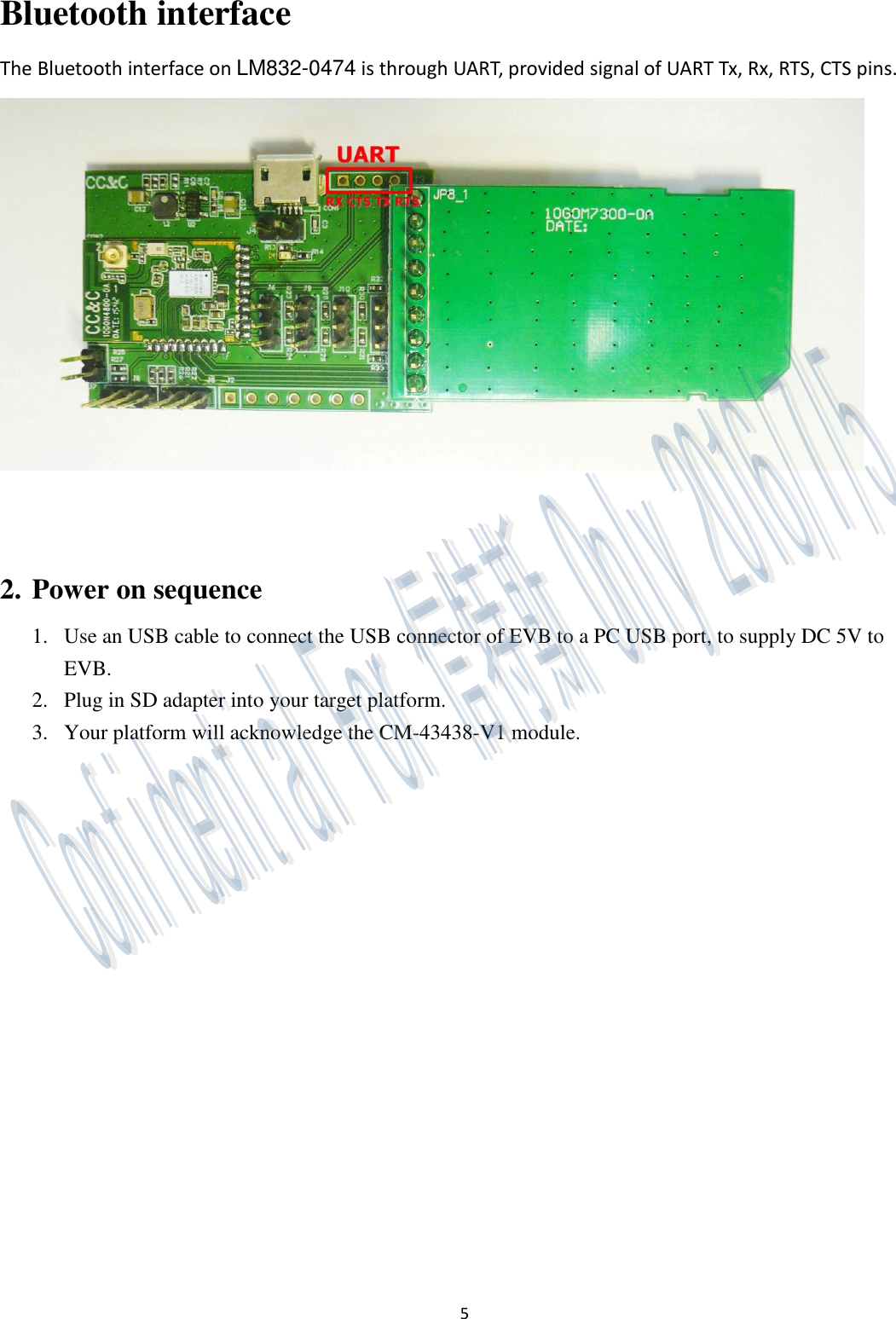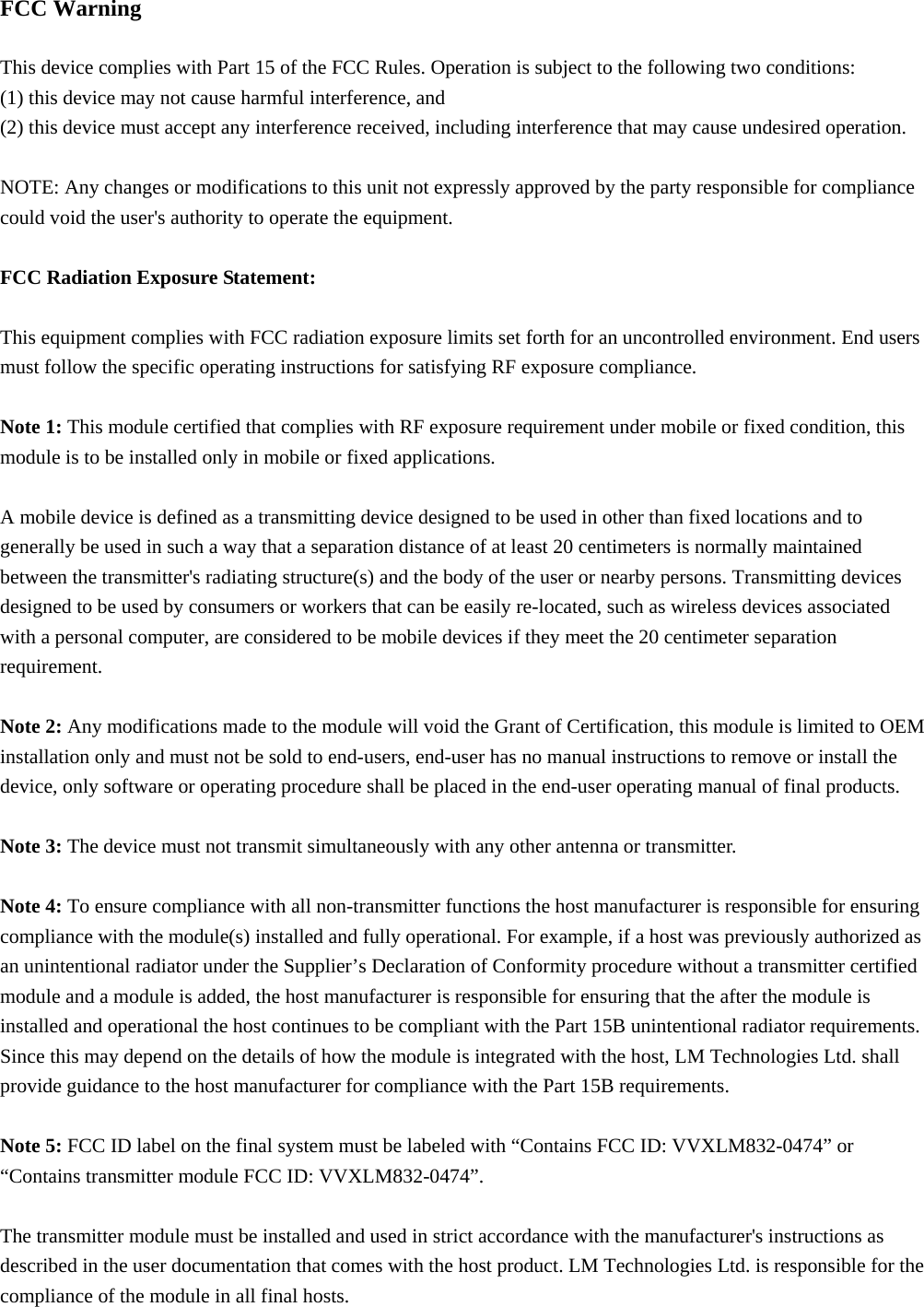LM Technologies LM832-0474 LM832 Wi-Fi & BT Dual Mode Combi Module User Manual 15 LM832 0474 UserMan
LM Technologies Ltd. LM832 Wi-Fi & BT Dual Mode Combi Module 15 LM832 0474 UserMan
Contents
- 1. 15_LM832-0474 UserMan
- 2. 15_LM832-0474 UserMan r1
15_LM832-0474 UserMan
